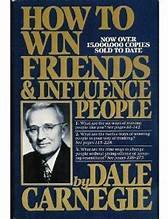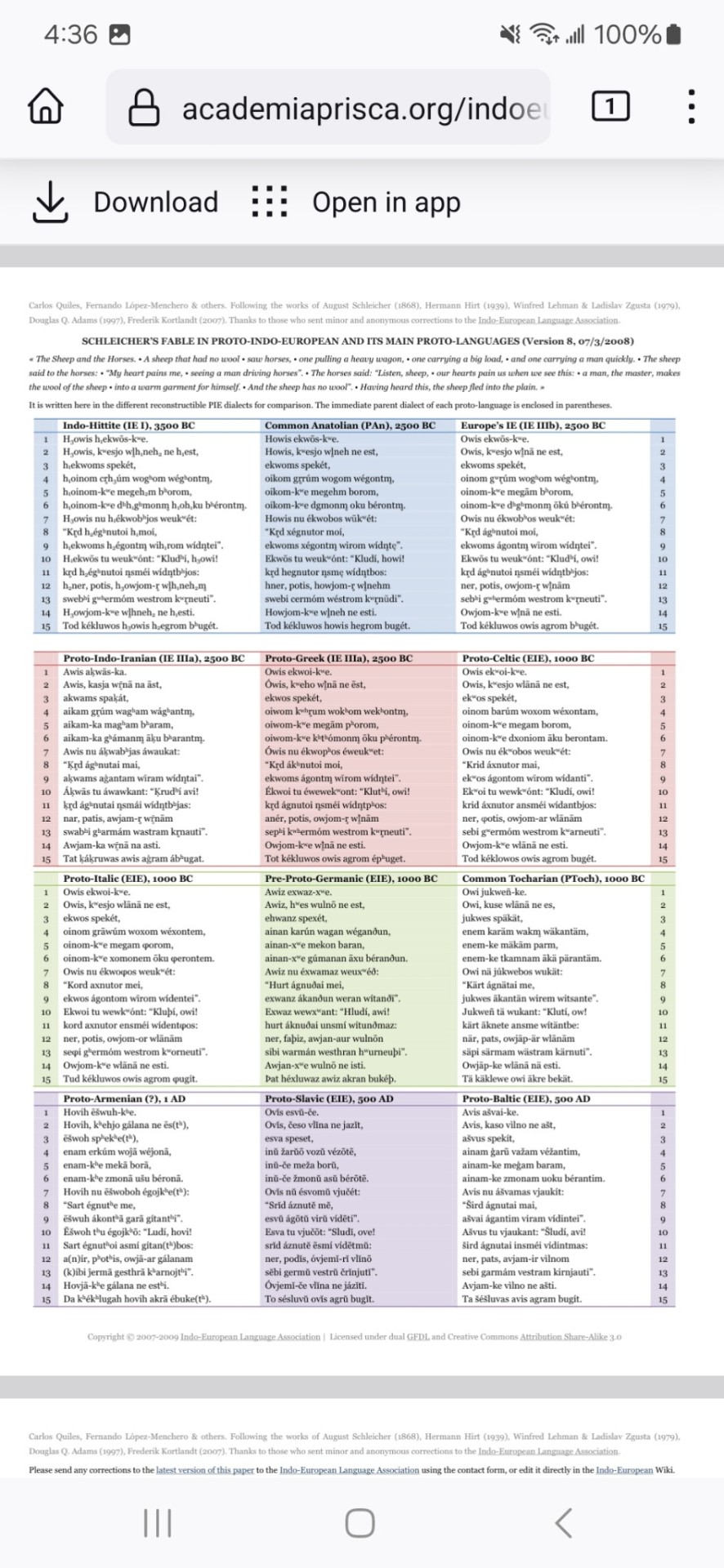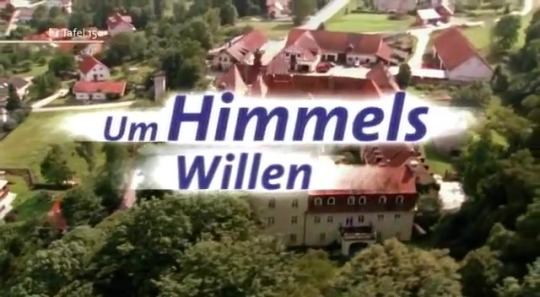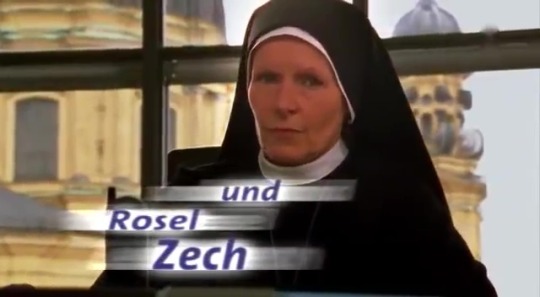#westrom
Explore tagged Tumblr posts
Link
#Donau#Eroberung#Felicitas#Frauen#Fulvius#Germanen#Glaube#Heidentum#Invasion#Juvavum#Kaiser#Krieg#Liebe#Macht#Norden#Römer#Salzburg#Wald#Wälder#Westrom
0 notes
Text
Cultivating Friendship
When I was much younger, my mother was the office manager for the local Dale Carnegie Training franchise and because of that, I was able to take their courses on scholarship. Those opportunities were a great help as I was learning about relationships in the working world. Thank you, Jay Westrom. Here is a quote from Dale. You can make more friends in two months by becoming interested in other…

View On WordPress
#Dale Carnegie Training#How to win friends and influence people#Quotes#Wes Westrom & Associates#Wisdom
1 note
·
View note
Text


Apophatisch
il y a même une sorte de théorie juridique apophatique. Das behauptet Bruno Latour in seinem Buch La fabrique du droit. Es gäbe, so heißt es in der deutschen Übersetzung, sogar eine Art apophatischer Rechtstheorie. Latour bezieht sich damit auf die Philosophie von Christian Atias, ich gehe davon aus dass dieser Bezug beispielhaft ist, also weiter für jede Rechtstheorie gilt, die das Recht durch Negationen definiert. Atias liefert nach Latour eine apophatische Rechtstheorie, das macht er an einem Zitat fest, in dem Atias das Recht zuerst über eine Reihe von Merkmalen definiert, die das Recht nicht qualifizieren sollen und in dem er schließlich mit einer rhetorischen Frage bezweifelt, ob das Recht überhaupt über etwas Spezifisches verfüge. Das Recht sei, so die Sammlung der Negationen, nicht konstitutiv, nicht kreativ, nicht deklaratorisch, nicht anerkennend, nicht verankernd, es sei nicht zuschreibend und nicht bestrafend, heißt es insoweit bei Atias. Definiert nur über Absagen, nur darüber, was es nicht sei: Mit apophatischer Rechtstheorie meint Latour eine Vorstellung, die der negativen Theologie entsprechen soll.
Aby Warburg kann auf spezifische Weise als jemand verstanden werden, der eine apophatische Rechtstheorie und eine apophatische Rechtsgeschichte liefert. Der Begriff des Apophatischen bekommt dabei einen besonderen Sinn. Bei Warburg würde ich unter dem Apophatischen keine Absage verstehen, nicht die Markierung jeder positiven Aussage als beschränkt, nicht als Beharren auf einen Kern, über den man nichts sagen könne. Unter dem Apophatischen würde ich bei Warburg des Verschlingen oder Verzehren verstehen, von mir aus auch schluckende Aussagen oder verschluckende Operationen damit verbinden. Was er auf den Staatstafeln als römisch-katholische Konstellation aus Theophagie und Anthropofagie präsentiert, ist Teil von übersetztem Verschlingen, bis hin in die geometrischen Ellipsen, deren Kreisen, Sprünge und Schübe verschluckend Techniken des Sprechens und der Bildgebung übersetzen, so dass es sich hier um geometrische und rhetorische Ellipsen handelt. Warburg liefert eine Vorstellung, nach der das Recht unbeständig ist. Dass dieses Recht jeweils, immer wieder, zuhauf über Spezifisches verfügt, gegen diese Vorstellung richtet sich das, was Warburg zeigt, gerade nicht. Die Unbeständigkeit ist bei Warburg bestimmt, scharf und hat sogar jeweils Bestand, nur im Vorübergehen oder Vergehen. Das Detail ist immer spezifisch. Das Spezifische mag immer etwas anderes sein, mag immer wieder wechseln und ausgetauscht werden, aber jedes Detail ist stets wieder von Spezifischem wie geschwemmt, vollgesogen bis oben hin mit Spezifizierung. Falls wo eine Lücke ist, da wird sie besetzt, jede Leere verstellt, um Sinn spezifizierend unterzubringen. Klar, es ist und bleibt in alter Sprache: Füllung, und wenn auch das hylemorphistische Schema, die Idee, dass hinter oder in Formen etwas anderes als Formen, nämlich Inhalte stecken würden, schal geworden ist und man versuchen soll, sie zu vermeiden, wenn also Formen von Formen getrennt, mit Formen assoziiert und mit Formen ausgetauscht werden - und die vorgebliche Füllung bleibt Verkettung, Verhäkelung oder Verschleifung, bleibt Kontrafaktur oder Kreuzung.
2.
In seiner Kritik Latours und einer Verteidigung Legendres kommt Clemens Porschlegel dabei auf ein Merkmal der Attraktivität des Rechts zu sprechen, und zwar in Form einer Frage, die Form dieser Frage ist wichtig, ich paraphrasiere darum nicht:
Wie und warum kommt es im Einzugsgebiet Westroms oder des römisch-christlich-papistischen Abendlandes zu genau dieser systematischen Ausdifferenzierung funktionaler Systeme?
Pornschlegel bringt treffend, repräsentativ oder symptomatisch, das Dogma der großen Ternnung mit großen Referenzen in Zusammenhang: der Referenz Rom, der Referenz des Westens und der Referenz eines großen Subjektes, in dem Fall dem Papa oder Papst. Das muss kein Papst sein. Thomas Vesting hat vorgeführt, dass das Dogma eines großen Westens auch über die Idee einer Trennungban der Vorstellung einer großen Anreicherung, dann wiederum an Gentlemen und Managern hängen kann.
Die Frage ist bei Pornoschlegel im Präsenz gestellt, nicht in einer Vergangenheitsform. Das ist in der Zeitform nicht schlecht formuliert. Denn es passiert wohl, die Annahme großer Trennung geht durch, wann genau ist unsicher. Ausdifferenzierung ist ein Begriff für Differenzierung, die wohl nie aus geht, sondern bei der immer wieder nach der Differenzierung vor der Differenzierung ist, wie beim Fußballspiel und (mit Warburg gedacht) vermutlich ebenso polar und unbeständig wie ein Ballspiel, das auf zweiseitigem Operationsfeld stattfindet und bei dem es entsprechen hin und her sowie auf und ab geht. Ausdifferenzierung ist Glücks Sache, ihre Götter heißen Fortuna und Occasio.
Man muss vielleicht nicht so weit gehen, wie das ein Reihe von Kollegen tun, die behaupten, dass die Geschichte kein Recht und das Recht keine Geschichte habe. Aber die Bindung ist brüchig. Auf jeden Fall, das ist gut formuliert, kommt was, eine Ausdifferenzierung - wohl auch, weil diese konsequente, in systematischer Hinsicht finale (nämlich System definierende) Differenzierung noch nicht erledigt ist, aber sicher erwartet wird, auf jedem Fall im Einzugsgebiet Roms.
Die Differenzierung ist ein Distanzschaffen, das ist eine Scheidekunst, da wird nicht nur unterschieden - und die Differenzierung vermehrt keine Differenz und vermindert keine Differenz. Man trennt etwas, man assoziiert etwas, man tauscht etwas aus: Alles das gehört zu dem, was Ihering noch Scheidekunst nennt, was Warburg Distanzschaffen nennt und auch zu dem, was Pornschlegel hier mit einem Begriff Luhmanns Ausdifferenzierung nennt und was Teil des Dogmas großer Trennung ist. Die Frage ist im Präsenz formuliert, weil die Differenzierung bisher nicht erledigt ist, bisher nicht garantiert ist. Insoweit behauptet sich das Dogma gegen etwas. Wie kommt es zu jener Differenzierung, die nicht einfach eine Differenzierung unter vielen Differenzierungen sein soll, sondern die als besonders gründlich und als Auszeichnung gleich für Systeme, Gesellschaften, für Rom und den Westen ins Spiel gebracht wird. Vielleicht, weil man schon darauf wartet, weil man diese Trennung vermisst, weil man im Haufen der Differenzierungen die Übersicht verloren hat, kommt es dazu, so wie es im Mangel zu Träumen und im Rauschen zu Visionen kommt. Die große Trennung, diejenige mit den herausragenden Differenzierungen, die von den Deutschen wie in Erinnerung an Fußballweltmeisterschaften Ausdifferenzierung genannt werden ("aus, aus, aus, die Differenzierung ist aus, Deutschland/ Rom/ der Westen ist Weltmeister") hat die Konsistenz eines Dogmas, eines eingerichteten und damit ausrichtenden Scheins, der wiederum im Zug einer Form und einer Wahrnehmbarkeit liegt. Die Ausdifferenzierung kann man sehen, man kann sie hören, sie ist greifbar und sie steht allen höheren und niederen Sinnen zur Verfügung. Nur stattgefunden hat sie noch nicht. Sie kommt, es kommt dazu, eventuell könnte man statt von Ausdifferenzierung auch von einer Adventsdifferenzierung, einer adventlich großen Trennung sprechen. Es liegt ein Choral in der Luft: Nun komm der Heiden Ausdifferenzierung.
2 notes
·
View notes
Text
Exploring Key Drivers: Demand Dynamics and Market Segments in the Cleaning Service Software Industry
Overview and Scope Cleaning services software refers to specialized digital tools designed to streamline and optimize various aspects of managing a cleaning business. This software streamlines operations, improves communication, enhances customer service, and increases efficiency for cleaning and janitorial companies by automating administrative tasks and providing valuable insights into business performance. Sizing and Forecast The cleaning service software market size has grown strongly in recent years. It will grow from $1.63 billion in 2023 to $1.79 billion in 2024 at a compound annual growth rate (CAGR) of 9.9%. The cleaning service software market size is expected to see strong growth in the next few years. It will grow to $2.65 billion in 2028 at a compound annual growth rate (CAGR) of 10.3%. To access more details regarding this report, visit the link: https://www.thebusinessresearchcompany.com/report/cleaning-service-software-global-market-report Segmentation & Regional Insights The cleaning service software market covered in this report is segmented – 1) By Type: Cloud Based, Web Based 2) By Application: Small And Medium Enterprises (SMEs), Large Enterprises 3) By Industry: Maid Service, Moving Service, Lawn Care, Carpet Cleaning, Car Care Asia-Pacific was the largest region in the cleaning service software market in 2023. North America is expected to be the fastest-growing region in the forecast period. The regions covered in the cleaning service software market report are Asia-Pacific, Western Europe, Eastern Europe, North America, South America, Middle East and Africa. Intrigued to explore the contents? Secure your hands-on sample copy of the report: https://www.thebusinessresearchcompany.com/sample.aspx?id=14669&type=smp Major Driver Impacting Market Growth The increasing expansion of the hospitality industry is expected to propel the growth of the cleaning service software market going forward. The hospitality industry comprises businesses offering guests accommodation, food, beverages, entertainment, and related services, encompassing hotels, restaurants, bars, resorts, and event planning companies. The expansion of the hospitality industry is driven by increasing globalization, rising disposable incomes, and growing consumer demand for travel and leisure experiences. Cleaning service software is used in the hospitality industry to streamline housekeeping operations, manage cleaning schedules, allocate tasks to staff, track inventory, and ensure efficient maintenance of guest rooms and facilities. Key Industry Players Major companies operating in the cleaning service software market are Verizon Connect, Broadcom Inc., Workwave LLC, Jobber, eMaint Enterprises LLC, GoCanvas, FieldAware US Inc., Repsly Inc., ZenMaid Software Inc., Loc8 IT, Kickserv Inc., Housecall Pro, Ergos Software Inc., Payzerware, Westrom Software. The cleaning service software market report table of contents includes: 1. Executive Summary 2. Market Characteristics 3. Market Trends And Strategies 4. Impact Of COVID-19 5. Market Size And Growth 6. Segmentation 7. Regional And Country Analysis . . . 27. Competitive Landscape And Company Profiles 28. Key Mergers And Acquisitions 29. Future Outlook and Potential Analysis Contact Us: The Business Research Company Europe: +44 207 1930 708 Asia: +91 88972 63534 Americas: +1 315 623 0293 Email: [email protected] Follow Us On: LinkedIn: https://in.linkedin.com/company/the-business-research-company Twitter: https://twitter.com/tbrc_info Facebook: https://www.facebook.com/TheBusinessResearchCompany YouTube: https://www.youtube.com/channel/UC24_fI0rV8cR5DxlCpgmyFQ Blog: https://blog.tbrc.info/ Healthcare Blog: https://healthcareresearchreports.com/ Global Market Model: https://www.thebusinessresearchcompany.com/global-market-model
0 notes
Text
I think I figured it out.


The colors are mostly arbitrary, I just needed to keep them straight.
In lines 4, 6, and 9 I was able to find the verbs pulling, carrying, and driving because they all shared the common suffix -ontm, the equivalent of English's -ing. This means woghom weghontm doesn't mean heavy wagon like I thought, but actually pulling a wagon (if they share the same root then it's literally pulling that which is pulled)
Line 13 gave me some trouble, but I realized that the earlier sentences were all in SOV word order, so the final word kwrneuti had to be the verb makes from line 12. The Wikipedia article for Indo-European cognates lists the PIE root for the word self as *s(w)e-, meaning swebhi had to mean himself. In line 4, the adjective heavy preceded the noun wagon, so I was able to figure out the order of the remaining words gwhermom for warm and westrom for garment.
In line 15, the word h2egrom shares its etymology with the word acre/agriculture, here meaning field, so bhuget means fled.
I'm still figuring out all the conjugations and declensions, but I feel like I finally cracked the code.
This is my Rosetta Stone.
If there are any linguistics professionals reading this, I could use some help.
I'm doing research into Proto-Indo-European, the mother tongue of much of Europe and South Asia, and I recently discovered Schleicher's Fable, a short story about sheep and horses which has been translated into a dozen proto-languages to show how different branches envolved over the millennia.

My problem is that I don't know the word order or declensions (suffixes for different conjugations) of any of these languages, so I have no idea which words mean what throughout the text.
I know owis/hovis/avis means sheep (same etymology as modern English "ewe")
Ekwos means horse (equus, equestrian, etc.)
Wlna/wlana/vilno means wool
Oinom/aikam/enem means one
Krd/kart/sird means heart (cardio)
Widntei/widntbhos means see/seeing/sight (video/visual)
I think agnutai/egnutoi means hurt or pain (agony) but I don't know for sure
Same with megehm/megam for big (presumably like mega/magnum)
I can recognize a handful of other words from context, but some sentences completely confuse me. The phrase "heavy wagon" appears to be "woghom wegontm," both words of which look like they possibly share the same root, but I don't know which means heavy and which means wagon. All the variations of "dgmonm oku bherontm" mean "carry a man quickly," but I don't know which words corresponds to carry, man, or quickly. I think bherontm means carry because it has the -ontm suffix which I think marks a verb, but again, I just don't know.
I don't know the words for "the master makes the wool of the sheep into a warm garment for himself" or "the sheep fled into the plain." It's helpful that the story is broken down into lines, but it doesn't explain what each individual word means in order, so I don't know the proper translation.
Does anyone know where I can find an in depth breakdown of Schleicher's Fable with every word and declension annotated? I've tried looking up Proto-Indo-European glossaries/dictionaries online, but every corpus spells the words differently (lots of subscript letters and numbers and asterisks), some words have multiple PIE translations and no two sites agree on which to use when. It's not helpful at all.
I need a word-by-word translation, something like:
PIE: owis kwesjo wlna na est ekwoms speket
Literal: sheep which wool no have horses saw
English: a sheep which had no wool saw horses
Does anyone know where I can find the proper resources for this project?
42 notes
·
View notes
Photo

The expense of healthcare is debilitating. When the costs comes due it can be economically devastating. In this interview with Truth In Equity’s Bill Westrom, Kathy Ferguson of Medical Debt Resolutions exposes deceptive billing activity by healthcare companies and will provide you vital pointers to make certain you’re not paying more than your reasonable share.
0 notes
Photo

The expense of healthcare is debilitating. When the costs comes due it can be economically disastrous. In this interview with Truth In Equity’s Bill Westrom, Kathy Ferguson of Medical Debt Resolutions exposes deceptive billing activity by healthcare suppliers and will provide you indispensable suggestions to ensure you’re not paying more than your reasonable share.
0 notes
Text
0 notes
Text
when I joined the fandom and found out the name for their ship I was kinda disappointed tbh... Like "Jed...tavius.. why are there two consonants next to each other...? It doesn't roll of the tongue well.. " why not call it jedavius? We can also come up with something more interesting/funny, orange juice ofc or something like romcow westrom or you know... tiny/miniature gays/husbands, we have that for Aziraphale and Crowley
So yeah
I feel like we missed an opportunity when someone decided to call it jedtavius and not orange juice.
Jedediah=j octavius=O O+j= oj oj=orange juice
123 notes
·
View notes
Photo

What do we do once we're done delivering signs for the Fayette Democrats? We dive into Old Kentucky Chocolates, of course. Momma needed to treat herself ���💜💜 #oldkentuckychocolates #lexington #kentucky #takecareofyourself #sharethelex #fayettedemocraticparty #democrats #bidenharris2020 #mcgrath #hicks2020 #westrom (at Southeastern Hills) https://www.instagram.com/p/CF5PD_iD3zL/?igshid=182yd21f29hmn
#oldkentuckychocolates#lexington#kentucky#takecareofyourself#sharethelex#fayettedemocraticparty#democrats#bidenharris2020#mcgrath#hicks2020#westrom
0 notes
Link
#Aetius#Frauen#Germanen#Glaube#Goten#Heidentum#Hunnen#Invasion#Kaiser#Krieg#Liebe#Macht#Ostrom#Reiter#Römer#Visigoten#Westrom
0 notes
Text

Detective Tales Dec 1948
Albert Drake

North-West Romances Dec 1948
George Gross

Jungle Stories Dec 1948
George Gross
#golden age art#pulp magazine art#pulp art#pulp art 1948#Detective Tales#Albert Drake art#North-WestRomances#George Gross art#Jungle Stories#byronrimbaud
2 notes
·
View notes
Text
Letter
1.
In den letzten Jahren haben verschiedene Forschungen sich denjenigen Techniken und Objekten zugewandt, die bei der Formierung und (Re-)Produktion des Rechts und seiner Wissenschaften eine zwar untergeordnete, damit aber effektive Rolle spielen sollen. Die Konstellation untergeordneter Effektivität scheint mir nicht an Eigenheiten solcher Techniken und solcher Objekte zu liegen, sondern an deren Verwechselbarkeiten und Austauschbarkeiten. Man kann, wie das etwas Thomas Hensel tut, von schwachen Medien, schwachen Techniken und schwachen Objekten sprechen, nicht, weil sie weniger effektiv wären, sondern weil es nur einer kleinen Anzahl von Operationen bedarf, bis sie andere Medien, andere Techniken und andere Objekte, also auch etwas anderes als Medium, Technik und Objekt erscheinen. Ihre Effektivität ist ihrer leichten Verwechselbarkeit und Austauschbarkeit affin, sie sind insofern nur sekundär, nur und immerhin Effekte mit Effekten.
In der deutschsprachigen Literatur steht dafür der Name von Cornelia Vismann, die in den Neunziger Jahren anhand von Akten, Medien- oder Kulturtechniken einen Zugriff auf die Geschichte und Theorie des Rechts gewagt hatte, dessen Neuartigkeit unter anderem darin lag, Geschichte und Theorie jenseits Figuren „großer Trennung“ (Goody, Latour, Viveiros de Castro) zu entwerfen, damit auch alte und neue Zeiten, nahe und ferne Räume weiter unterscheidbar zu halten, die Distanz dieser Unterscheidung aber verkehrsfähig und verkehrbar zu halten und damit 'pendeln' (Warburg) zu lassen. Unterscheidungen, die für Rechtssysteme tragend sein sollen, wie etwa diejenigen zwischen Ostrom/ Westrom, Subjekt/ Objekt, Personen/ Dingen, Schriftlichkeit/ Mündlichkeit oder Wort/ Bild hat Vismann einer Kritik ihrer Dynamik und Details unterzogen, wie etwa in ihrer Interpretation von "Schreibstunden". Die Akte ist bei Vismann mal ein Medium (wie die notitia dignitatum), mal ein Objekt (wie die nackte Phryne), mal ein Subjekt (wie die nackte Phyrne), mal eine Handlung (wie der der Aktenakt). Akten sind korrumpierbar, sie verschlingen alles und sind allem verschlungen, lassen alles durchgehen. Vismann rekonstruiert sie insofern nicht über Generalisierungen, sondern über Details und Dynamik.
In der französischen Literatur verbindet man den Zugriff auf solche detaillierten und dynamischen Techniken mit so unterschiedlichen Namen wie Marta Madero mit ihrer Forschung zu angepinnten Tafeln, Yan Thomas zu römischen Operationen und Bruno Latour zum conseil d'etat.
In der englischen Literatur verbindet man diese Zugriffe auf Techniken und Objekte mit Namen wie Karen Barad, Susan Leigh Star oder Donna Haraway. Solche Zugriffe wollen wir bündeln und vertiefen, nicht aber auf ihrer Neuheit beharren. Insofern gilt unsere Tagung auch einer Archäologie der Letter und einer Archäologie minorer Objekte, die etwas lassen, indem sie gelassen sind. Wir spannen eine Bogen von der heute aktuellen situativen Ontologie zu den Situationisten und ihrem Verhältnis zu den Lettristen, weiter zu Carl Schmitts Dadaismus und noch weiter zu Rudolf von Jherings Scheide-, Digestiv-, Zersetzungs- und Zerlegungskunst sowie ihrer Destillation kleinster Zeichen und noch weiter zu Luthers Sendbriefen und weiter Passierscheinen der frühen Neuzeit. Archäologisch bauen wir eine Treppenszene auf, zum Auf- und Abstieg in entfernte Zeiten.
2 notes
·
View notes
Text
Why Reading is a Good Hobby
Why Reading is a Good Hobby https://laurenwestrom.com/why-reading-is-a-good-hobby/ Murasaki Shikibu wrote “The Tale of Genji,” which is believed to be the first novel in the world during the 11th century. The story is what is believed to be the world’s first novel. Over a thousand years have passed since the creation of novels, and people still read them. Even in today’s era, where stories can appear on portable devices and disappear within 24 hours, people still keep reading. The scientific answer is that reading books can have various benefits for people. It’s a pleasure to read, and there are also benefits beyond enjoyment. Books can help improve one’s mental and physical health, and these benefits can last for a lifetime. These benefits can start as early as childhood, and they can continue into the senior years. Here’s a brief description of how reading can affect one’s brain and body. It strengthens your brain According to a growing body of research, reading can alter one’s mind. MRI scans have revealed that reading involves a network of signals and circuits in the brain, and as one’s reading ability increases, these connections get more sophisticated. In 2013, a study was conducted to see how reading a novel affected the functioning of the brain. Participants were asked to read “Pompeii” for nine days. During this time, the tension in the story increased the activity in various parts of the brain. According to the study, the connectivity in various parts of the brain increased after the reading period. One of these is the somatosensory cortex, which is a region that responds to pain and movement. Why you should read with your kids The Cleveland Clinic suggests that parents start reading with their kids from very early childhood. Children develop positive associations with books as they read with their parents. This can help them develop a love for reading and make it enjoyable for them in the future. One of the most important advantages of reading at home is that it can boost a child’s school performance. It can also help them develop their communication skills and improve their vocabulary. Increases your level of empathy According to a study, people who read fiction, which explores the inner lives of its characters, are more capable of understanding other people’s feelings. This ability is referred to as the “theory of mind,” which is a set of skills that are essential for maintaining and building social relationships. Although a single session of reading fiction doesn’t usually result in this feeling, research has revealed that people who have a long-term interest in reading have a better theory of mind. Builds your vocabulary During the 1960s, researchers were talking about the Matthew effect, which is a concept based on a biblical verse. According to Matthew 13:12, “Whoever has will be given more, and they will have an abundance. Whoever does not have, even what they have will be taken from them.” The concept of the Matthew effect states that the rich get richer while the poor get poorer. It applies to both money and vocabulary. Studies have shown that children who start reading at a young age develop large vocabularies. Vocabulary size can affect various aspects of their lives, such as their standardized test scores and job opportunities. A survey conducted in 2019 by Cengage revealed that 69 percent of companies are looking for workers with soft skills, such as those who can communicate effectively. One of the best ways to improve one’s vocabulary is by reading books. The post Why Reading is a Good Hobby first appeared on Lauren Westrom | Hobbies. via Lauren Westrom | Hobbies https://laurenwestrom.com May 17, 2023 at 06:44PM
0 notes
Photo









Um Himmels Willen (For Heavens Sake) - ARD - January 8, 2002 - July 25, 2017
Sitcom (247 episodes)
Running Time: 30 minutes
Stars:
Janina Hartwig as Sister Hanna Jacobi
Fritz Wepper as Mayor Wolfgang Wöller
Karin Gregorek as Sister Felicitas Meier
Emmanuela von Frankenberg as Sister Agnes Schwandt
Denise M'Baye as Sister Lela
Andrea Sihler as Sister Hildegard Hähnlein
Horst Sachtleben as Bishop Gottlieb Rossbauer
Andrea Wildner as Marianne Laban
Lars Weström as Anton Meier
Wolfgang Müller as Hermann Huber
Former main cast
Rosel Zech as Dr. Dr. Elisabeth Reuter
Gaby Dohm as Baroness Louise von Beilheim
Jutta Speidel as Sister Lotte Albers
Michael Wenninger as Doctor Martin Richter
Anna Luise Kiss as Barbara Silenius.
Hellen Zellweger as Julia Seewald
Anne Weinknecht as Sister Sophe Tiezte
Donia Ben-Jemia as Sister Gina Gallo
Nathalie Schott as Sister Ingrid Knoop
Antje Mönning as Sister Jenny Marquard
Julia Heinze as Maria Gasser
Bruni Löbel as Grandma Meier
#Um Himmels Willen#TV#ARD#2000's#Sitcom#Janina Hartwig#fritz wepper#karin gregorek#Emmanuela von Falkenberg#Denise M'Baye#andrea sihler#Horst Sachtenben#Andrea Wildner#Lars Westrom#wolfgang muller
0 notes
Text
Hoping to minimally doxx myself here, but to any of my followers who also live in Minnesota, particularly those who have enjoyed my moss- and lichenblogging:
The biodiversity atlas project that I have been a part of doing archival work was cut from the most recent version of the MN state legislature’s Environment and Natural Resources Trust Fund, which is an incredibly important source of funding for the project. The atlas is a publicly accessible record documenting state biodiversity and a flagship project for the museum I’ve been working for, and it would be terrible to see it flounder due to legislators not understanding its value. The conference committee session to reconcile the House and Senate versions of the bill (one of which includes the atlas, one of which does not) ends today (5/23/22), so if you are willing to either call or email the legislators involved and tell them they should include the project, please reach out to me for more information. I even have a potential script I can share, provided by one of the museum curators.
The representatives to contact are:
Representative Rick Hansen - [email protected] Representative Patty Acomb - [email protected] Representative Josh Heintzman - [email protected] Senator Bill Ingebrigtsen - [email protected] Senator Torrey Westrom - [email protected] Senator Foung Hawj - [email protected]
63 notes
·
View notes